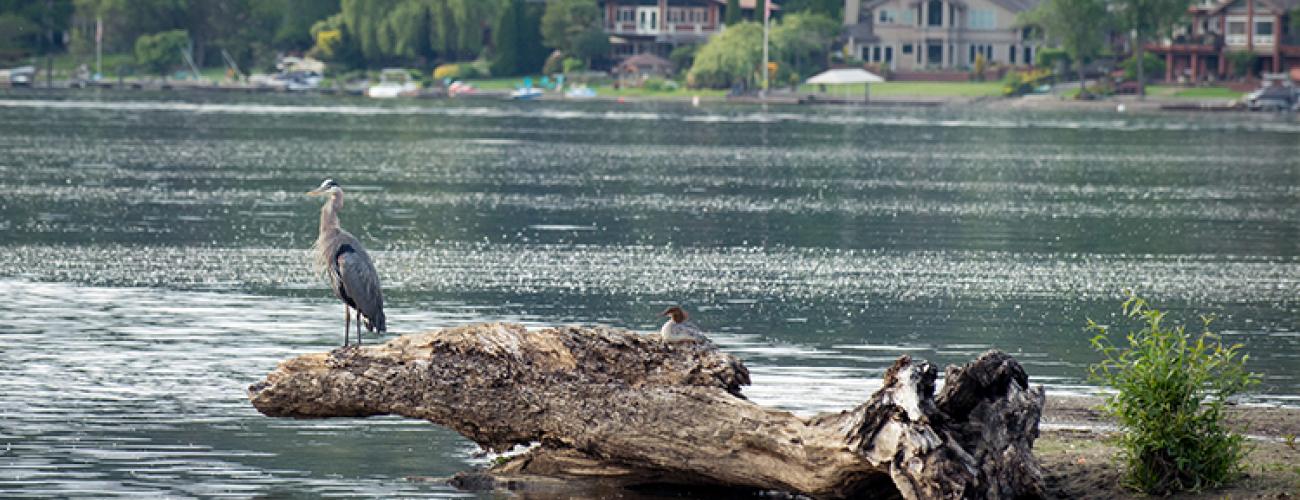Lake Sammamish Issaquah Creek restoration project
Project summary
Washington State Parks, in partnership with the Mountains to Sound Greenway Trust, will create improved in-stream habitat along the lower 6,000 feet of Issaquah Creek that flows through Lake Sammamish State Park. The result will be an environment that is more hospitable to Chinook and other salmon species, where they can migrate, spawn and survive.
- Location: Lake Sammamish State Park
- Estimated start date: June 15, 2025
- Estimated end date: September 30, 2025
This spring and summer, visitors will see work being done at Lake Sammamish State Park on the lower part of Issaquah Creek.
Construction crews will be moving large woody materials into the stream, planting native plants and trees on the banks of Issaquah Creek and shoring up the banks.
This will make the area more resilient and diverse and the stream more hospitable for Chinook and other salmon species.
The Mountains to Sound Greenway Trust is working to secure more than 4,000 volunteer hours toward invasive weed removal and control, native plantings, support for those new native plans and other maintenance activities.
Several existing trails run along both sides of Issaquah Creek and are popular with community members. A large parking area with a bathhouse is located southwest of the creek.
This project may result in traffic congestion and restricted access to or intermittent closures of the Issaquah Creek trail, Homestead trail and Boat Launch trail, as equipment is staged and work is done.
Community participation
Volunteer opportunities can be arranged at:
Restoring Lower Issaquah Creek - Mountains To Sound Greenway Trust
Project history
Issaquah Creek has supported salmon, wildlife and people since time immemorial. But the area has more recently been heavily logged, farmed and developed. This has created challenges for the creek, including disrupted water flow and poor habitat for salmon.
Juvenile salmon need slow-moving water with shelter to grow, rest and hide from predators. With a fish hatchery very close by, salmon would naturally use Issquah Creek, and the project is helping restore the creek to its natural state, giving young salmon a better chance to survive their journey along the creek and through Lake Sammamish, Lake Washington and the Ballard Locks.
Climate change is also taking its toll. Rising temperatures, lower summer water levels and increased winter flooding all impede the salmons' journey. By adding large wood and planting native trees, we're making the creek healthier for salmon and for the people and wildlife that depend on the health of this keystone species.
In the mid-2000s, Parks began a process to reassess the future of Lake Sammamish State Park. Parks worked with the Greenway Trust and community partners on the creation of a new conceptual master plan for the park.
Two additional master plans were written in 2005, one for conserving Chinook and other salmon and one for restoring riparian habitat, wetlands and the lakeshore. The salmon conservation plan was updated in 2017.
Much of this effort to restore riparian habitat has been successful, giving us the opportunity to do more comprehensive ecological restoration this summer.
Once complete, this project will finish nearly all planned restoration in lower Issaquah Creek under the 2005 and 2017 Chinook Salmon Conservation Plans.

